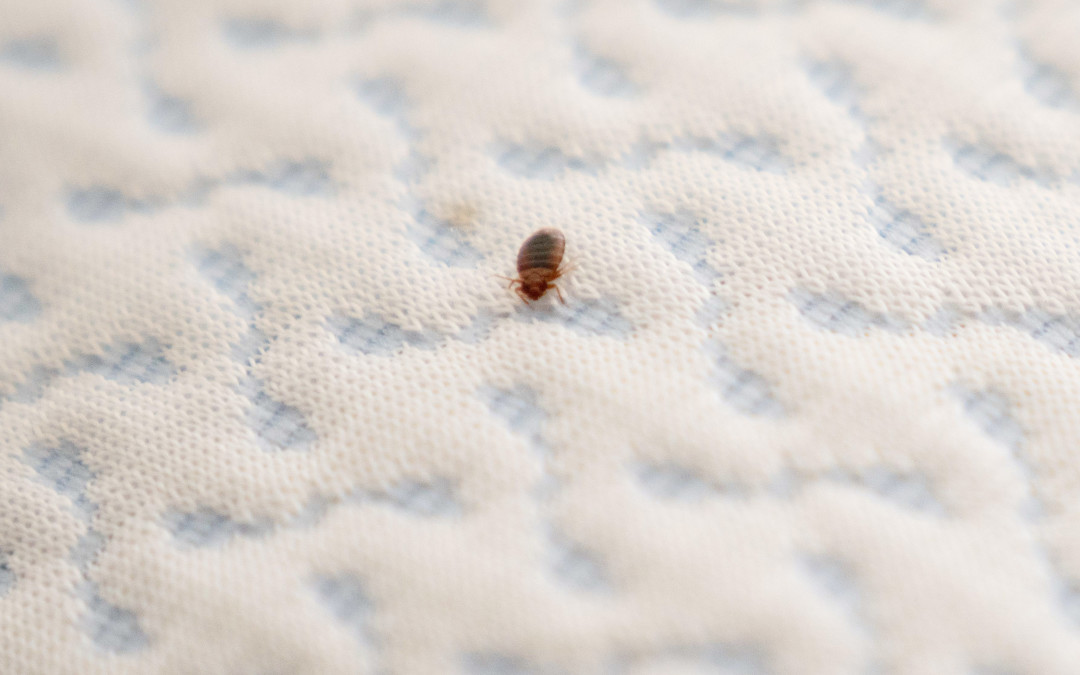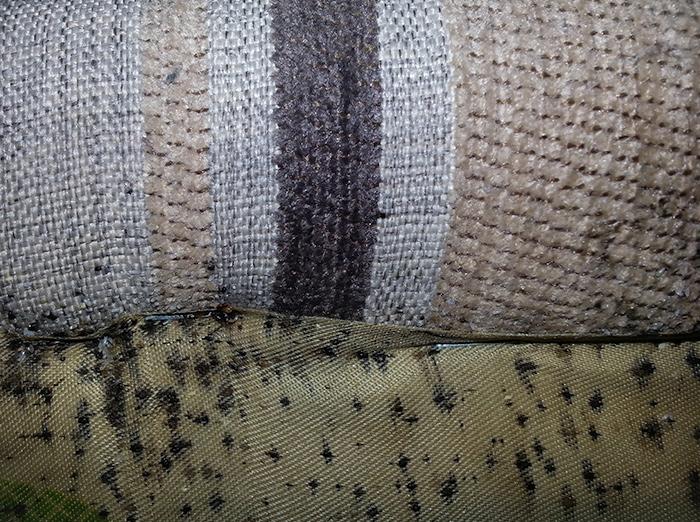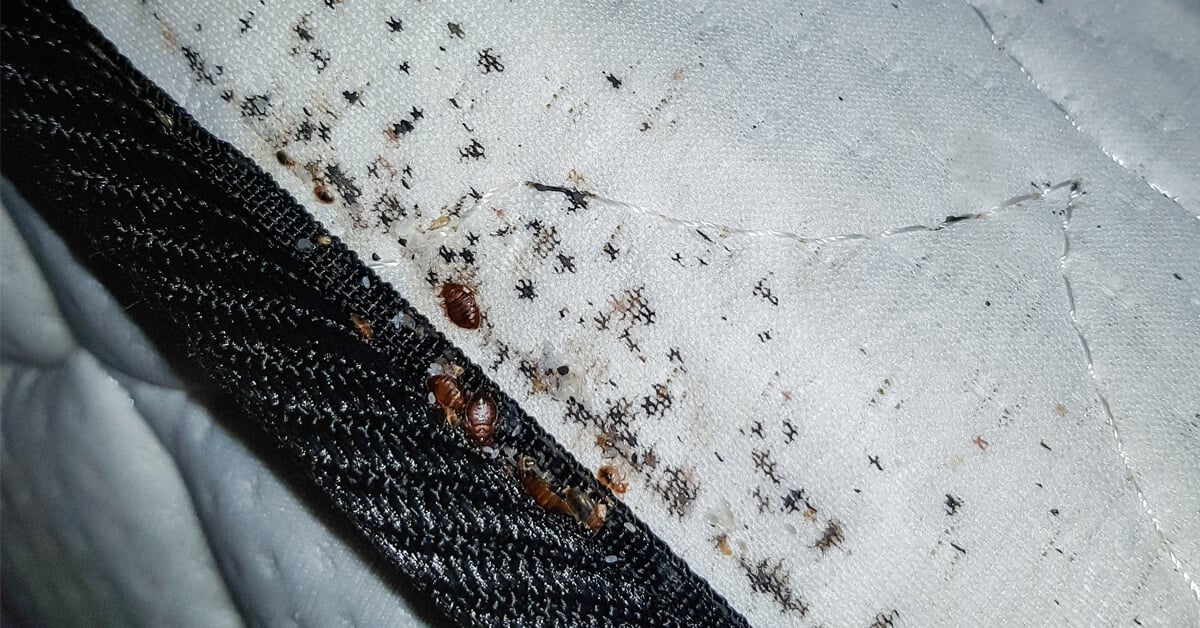Imagine this: you’ve just brought home a brand-new piece of furniture. The excitement of a fresh addition to your space fills the air.
But as you settle in, a nagging question creeps into your mind—could bed bugs be lurking in your new purchase? It’s a thought that might make your skin crawl, but you’re not alone in wondering. In fact, many people share this concern.
Before you jump to conclusions or start worrying, let’s uncover the truth together. By the end of this article, you’ll have the knowledge to make informed decisions and ensure your home remains a sanctuary free from unwanted guests. Ready to find out more? Let’s dive in.

Credit: johnnybpestcontrol.com
Signs Of Bed Bugs In New Furniture
Bed bugs can sneak into new furniture without notice. These tiny pests hide in small crevices and seams. Knowing the signs can save you from a nasty surprise.
Inspect Seams And Crevices
Bed bugs often hide in seams of couches and mattresses. Check crevices and corners for small black spots. These spots are fecal matter left by bed bugs.
Check For Shed Skin
Bed bugs shed skin as they grow. Look for tiny, translucent skin casings. You’ll find them around seams and hidden areas.
Look For Live Bugs
Finding live bugs is a clear sign. They are small, brown, and oval-shaped. Use a flashlight to inspect hidden areas.
Notice Any Musty Odors
Bed bug infestations can cause a musty odor. The smell comes from pheromones released by bed bugs. If new furniture has an unusual scent, investigate further.
Spot Blood Stains
Blood stains on upholstery can indicate bed bugs. These stains occur when bed bugs are crushed. Inspect any discolored spots carefully.

Credit: www.millerthekiller.com
How Bed Bugs Infest New Furniture
Bed bugs can find their way into new furniture. Their presence in homes is unsettling. Understanding how they infest new furniture helps in prevention.
How Bed Bugs Hide In Furniture Stores
Bed bugs can lurk in furniture stores. They hide in crevices and seams of couches and beds. They hitch rides on delivery trucks. This makes it easy for them to enter your home.
Transportation As A Vector For Bed Bugs
Transporting furniture can spread bed bugs. Delivery trucks often carry used and new items. Bed bugs can transfer from one piece to another. This risk is common with shared transport vehicles.
Stored Furniture In Warehouses
Warehouses can be a breeding ground for bed bugs. Furniture stored for long periods attracts these pests. Dust and debris provide hiding spots. Regular inspections can reduce infestation risks.
Packaging Materials And Bed Bugs
Packaging materials can harbor bed bugs. Cardboard and fabric wrap can provide shelter. Bed bugs can travel unnoticed in these materials. Checking packaging thoroughly is essential.
Second-hand Furniture Risks
New furniture might contain reused materials. Bed bugs can survive in these recycled parts. This risk is higher in second-hand furniture. Inspecting before purchase can prevent infestations.
Preventing Bed Bug Infestations
Bed bugs are tiny pests that cause big problems. They can sneak into your home undetected. Even new furniture is not always safe. Preventing a bed bug infestation involves taking careful steps. These steps help ensure your new furniture remains bed bug-free.
Inspect Your Furniture Thoroughly
Before bringing new furniture home, inspect it closely. Look for any signs of bed bugs. Check seams, crevices, and undersides. Even small cracks can hide these pests. Use a flashlight to see better. Early detection is key to prevention.
Maintain A Clean Environment
A tidy home deters bed bugs. Regular cleaning reduces hiding spots. Vacuum floors and furniture often. Pay attention to corners and tight spaces. Use a vacuum with a HEPA filter for best results. Dispose of vacuum bags promptly to avoid re-infestation.
Use Protective Covers
Encasements protect mattresses and pillows from bed bugs. Choose covers designed to prevent infestations. These covers trap any existing bugs inside. This prevents them from spreading. They also keep new bugs from entering.
Be Cautious With Secondhand Items
Secondhand furniture often harbors bed bugs. Buy from reputable sources only. Check for signs of bed bugs before purchasing. Clean and sanitize items thoroughly. Consider professional cleaning services for used items. This reduces the risk of bringing bed bugs home.
Monitor Regularly
Stay vigilant even after taking precautions. Regularly check your furniture for bed bugs. Early detection helps avoid larger infestations. Use bed bug interceptors under furniture legs. These devices trap bed bugs trying to climb up.
:max_bytes(150000):strip_icc()/GettyImages-183382435-5bd8579646e0fb00515ec641.jpg)
Credit: www.thespruce.com
Conclusion
New furniture might hide unwelcome guests. Bed bugs can sneak in. Always inspect new pieces before bringing them home. Look for small, dark spots or tiny bugs. Keep your home safe with regular cleaning. Vacuum often and use protective covers on mattresses.
Staying alert prevents infestations. Contact professionals if you find any signs. Remember, prevention is better than dealing with an outbreak. Enjoy your new furniture without worry. Stay informed and keep your living space bug-free. A little caution goes a long way.
Happy furnishing!

